All the events that are happening at the Exchange in sturminster Newton through the month of July 2022.
Call the box office on 01258 475 137
or visit https://www.stur-exchange.co.uk
All the events that are happening at the Exchange in sturminster Newton through the month of July 2022.
Call the box office on 01258 475 137
or visit https://www.stur-exchange.co.uk
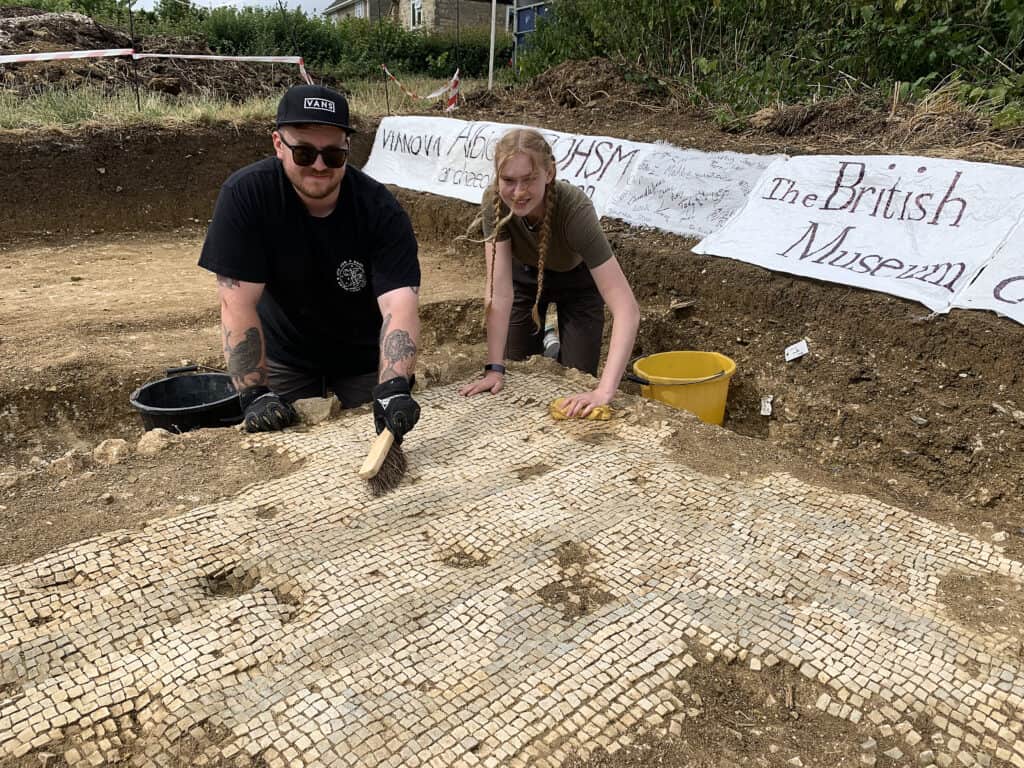
Archaeologists are expecting to re-write the story surrounding Hinton St Mary’s iconic Roman mosaic pavement almost six decades after the original discovery.
After just two weeks back at the site, archaeologists commissioned by the British Museum have uncovered parts of a second mosaic, plus thousands of other finds ranging from pottery to oyster shells.
And dig co-director Peter Guest said the traditional view that this was a Romano British villa may have to change.
“We still have a few questions to answer but we’re beginning to show that the story we thought we understood is actually wrong,” he said.
“We need to start re-thinking what was happening in this quiet part of Dorset 1,700 years ago.
“We would like to explain to people in Hinton St Mary, Sturminster Newton and North Dorset what this place may have looked like and how the mosaic might have been used.
“One of the interesting things is that it is very late. The Romans were in Britain for 350 years and the Roman period ended about 400 AD.
“Everything we are finding suggests that up until about 350 AD the site was open fields.
“But about 350 somebody – or some people – decided to build some elaborate buildings here.
“They had the finest mosaics that money could buy and decorated walls around them too.
“But it was only used for about 50 years before the Roman occupation ended.”
The earliest Roman Christ
The original mosaic was discovered in 1963 behind the then blacksmith’s forge, now owned by equestrian artist Katie Scorgie.
The discovery was big news not just in Dorset but in the wider archaeological world, not least because of its central panel – a depiction of a man that is thought could be the earliest representation of Jesus Christ in the entire Roman empire.
The mosaic pavement also included depictions of dogs, deer, trees and pomegranates.
“It is a unique piece of evidence for the spread of Christianity in late Roman Britain,” said Peter, a freelance archaeologist trading as Vianova Archaeology, contracted by the British Museum to lead the latest dig.

There never was a villa
“It’s thought that it may represent Jesus Christ. If it’s not Jesus, it might be one of the first Christian emperors but [either way] it’s important.
“We now know there wasn’t a Roman villa here. There were Roman buildings but they weren’t part of a big farmhouse or manor.
“Clearly it was a place of importance, perhaps religiously.It could have been a shrine or the focus of an early Christian community, perhaps a monastic one. But it was only an important place for a maximum of 50 to 100 years.”
Peter believes there was ‘almost certainly’ no overlap into the Anglo-Saxon era for the Hinton site.
The evidence that the Hinton buildings were not a villa includes the fact that the eight-by-5 metre double room that housed the original mosaic flooring was not part of a much bigger building.
“It was part of a complex of little buildings,” said Peter. “We think there would have been stables and agricultural buildings.”
The current four-week dig follows a trial excavation last year and a third season is planned for 2023.
It is doubling as a training dig for 15 university students, with pupils of Sturminster’s Yewstock School also involved.
New finds include black burnished ware pottery from the shores of Poole harbour and colour-coated ware; low-value coins from the early 300s; an enamel object that may have been a decorated stud; part of a ring with a stone inside; two lead weights; kiln-fired bricks and stone roof tiles; animal bones, probably of pigs and cattle; and oyster shells.
“Oysters were a popular snack for the Romans,” said finds officer Christine Waite.
A second mosaic
Most excitingly – but frustratingly – the dig has also unearthed a second mosaic, once housed in a second building 10 or 15 yards south-west of the original.
“It’s of the same date and must have formed part of the same complex,” said Peter.
“Unfortunately we only have fragments. The rest was destroyed when this field was ploughed, probably 1,000 years ago.
“I have a suspicion that in its time it was as nice, if not nicer, than the famous one.”
Surviving parts include a black-and-white border section, black triangles and a few smaller black, white and red cubes which hint at a more elaborate decoration.
The high quality cubes in both mosaics are thought to have been made at Dorchester.

Jamie recalls 1963 dig
One of the first to work on the Hinton St Mary dig 59 years ago vividly recalls the excitement generated as the site’s archaeological importance became evident.
Retired art college lecturer Jamie Hobson, 72, personally helped to uncover the central roundel that turned out to be unique in the Roman empire.
“There was a lot of excitement and I remember being filmed by the BBC,” says Jamie, who now lives at Salisbury.
“It was a real quality find. Nothing like it had been discovered before.”
Jamie was a 13-year-old at Sturminster Newton Secondary School in 1963 and remembers headmaster Stan Tozer approaching him in the corridor.
“Hobson, you’re interested in archaeology. Walk up to Hinton. Somebody has found something.”
There he met Dorset Museum curator Roger Peers and a second archaeologist he remembers as being ‘old school’.
“I seem to recall being up there for weeks and not doing anything at school but that may be just my memory,” he says.
“I loved every minute of it. I and another boy, Colin Lawrence, uncovered part of the roundel. I went home to Shillingstone but came back next morning. We were beginning to discuss what it was.
“Someone suggested it might be the head of Christ.”
Jamie’s last memory of the dig is from a wet Saturday when they were using water and sand to clean the mosaic and bring up the colours.
“The colours were quite intense when we dug it but they quickly became dull and that’s why we were cleaning it,” he says.
“After that I think they covered it with glue and paper, rolled it up and took it to the British Museum.”
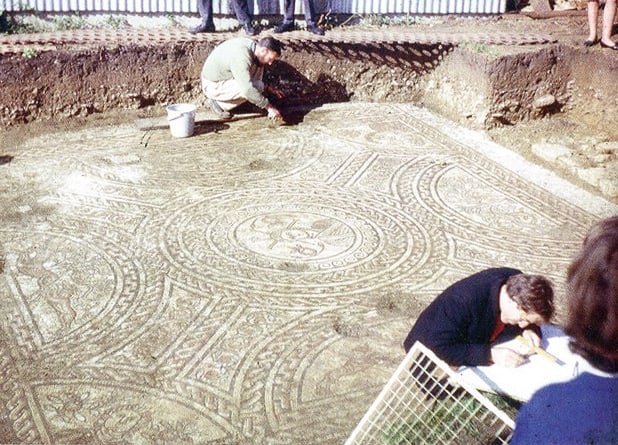
A new home for the Hinton mosaic?
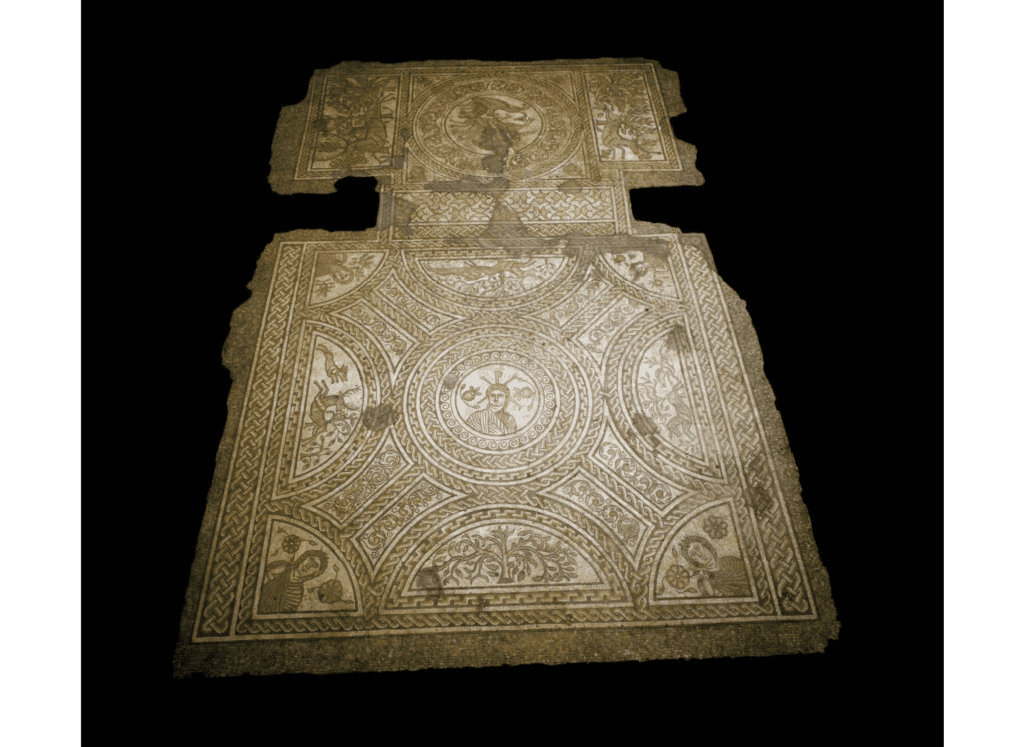
Could Hinton St Mary’s famous Roman mosaic be on its way back to Dorset after almost 60 years?
Since the British Museum’s millennium revamp more than 20 years ago, only the central roundel has been on display in London, with the rest of the pavement in storage.
But the digital BV understands that discussions are at an advanced stage with a view to bringing the important Roman artefact to the Dorset County Museum in Dorchester or another site.
“Wherever it goes, we would like to be able to better explain it to the public,” said dig co-director Peter Guest.
“It is iconic and not just in Britain. Whether it depicts Jesus Christ or a Christian emperor, it’s unique in a Roman world that included the Holy land.”
• The dig site will be open to visitors this Sunday 3rd July, from 2 to 5pm.
Shaftesbury School teacher Alex More has been named as one of 80 Pearson National Teaching Award Silver Award winners across the country. He received the Award for Digital Innovator of the Year for his outstanding commitment to changing the lives of children. Alex is the school’s Lead Teacher of Innovation in Teaching and Learning, and currently completing his EdD through distance learning at Bath University. He has had a significant impact on Shaftesbury School’s students, parents and the local community, as well as making global connections, including with a school in Ghana.
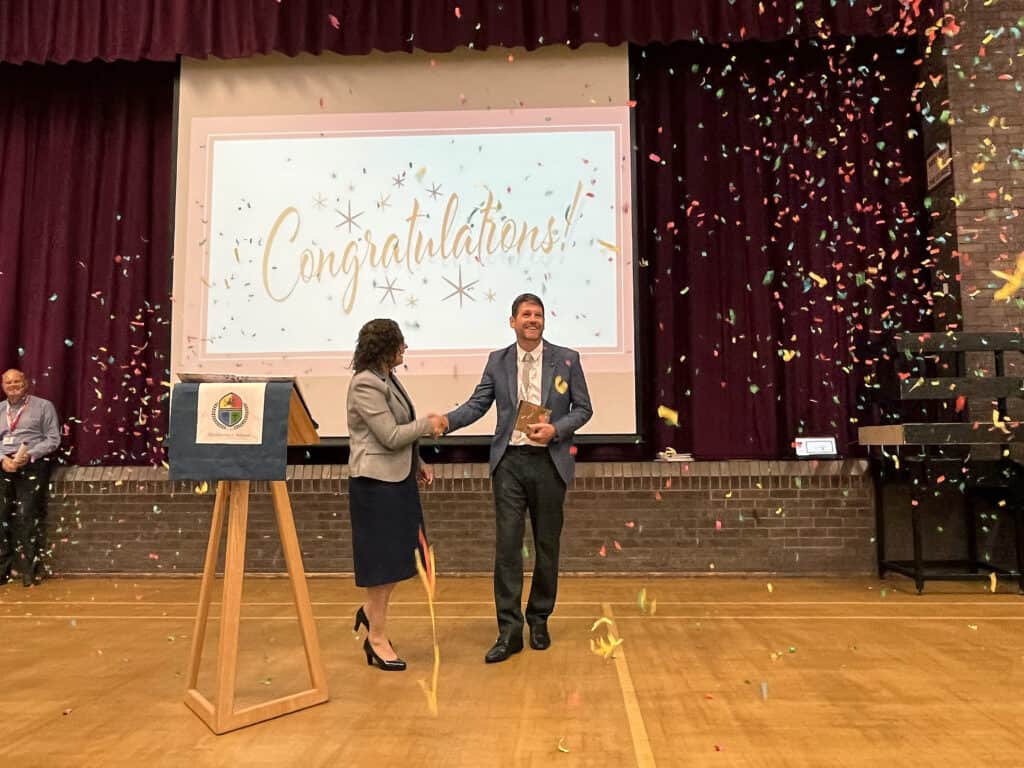
Donna London-Hill, headteacher of Shaftesbury School said: “We are so incredibly proud of Alex and he is thoroughly deserving of this national award.
His energy and drive in thinking about and bringing the future of education to the heart of our school is second to none. I also want to congratulation Becky Yeo, another of our teachers, who was highly commended.”
As a Silver Award winner, Alex has now been shortlisted for one of just 16 Gold Awards later in the year. These once-in-a-lifetime achievements will be broadcast on the BBC’s The One Show as part of a week-long celebration of teaching.
Education Secretary Nadhim Zahawi said: “Congratulations to Alex on this incredible achievement and for the hard work and dedication which led up to it. Winning this award is impressive, well-deserved and shows Alex’s commitment to helping students achieve their full potential.”
ABOUT THE SCHOOL
Fairmead Community Special School transforms the lives of pupils aged between
4-19 years with additional learning needs (MLD and ASD). The school works in partnership with parents/carers and other stakeholders to develop our pupils in becoming positive individuals who make a valuable contribution to their community.
HIGHER LEVEL TEACHING ASSISTANT (HLTA)
(37 Hours per week – Term Time only – 39 weeks) Grade 12 (£19,499 – £22,398) subject to experience
We are seeking to appoint a professional HLTA (Higher Level Teaching Assistant) responsible for learning activities under a system of supervision involving planning, preparation and delivering learning activities to an individual or small group. To monitor, assess and record pupils’ achievement, progress and development. Experience with complex ASD/SLD pupils is essential. This position will be overseen by a member of the Senior Leadership Team.
To obtain an application pack please view http://www.fairmeadschool.com/vacancies or contact [email protected]
Prospective candidates are warmly invited to visit our school; this can be arranged by contacting [email protected]
Fairmead School is committed to safeguarding the school community. All job applications must contain the disclosure of any spent convictions and cautions. The school will carry out pre-employment vetting procedures, which include the successful outcome of an enhanced DBS
Closing/Shortlisting Date: Wednesday 20th July 2022
Interviews: Monday 25th July 2022
ABOUT THE SCHOOL
Fairmead Community Special School transforms the lives of pupils aged between
4-19 years with additional learning needs (MLD and ASD). The school works in partnership with parents/carers and other stakeholders to develop our pupils in becoming positive individuals who make a valuable contribution to their community.
SENIOR LEARNING SUPPORT ASSISTANT
(37 Hours per week – Term Time only – 39 weeks) Grade 13 (£17,088 – £18,866) subject to experience
Under the guidance of the class teacher, the Senior LSA will provide reliable and consistent support for the class. They will support the teacher/s by working with individual pupils, small groups or taking the class for some lessons. The Senior LSA will be involved in supporting the delivery of all aspects of the school’s curriculum, in line with the school’s curriculum policies
To obtain an application pack please view http://www.fairmeadschool.com/vacancies or contact [email protected]
Prospective candidates are warmly invited to visit our school; this can be arranged by contacting [email protected]
Fairmead School is committed to safeguarding the school community. All job applications must contain the disclosure of any spent convictions and cautions. The school will carry out pre-employment vetting procedures, which include the successful outcome of an enhanced DBS
Closing/Shortlisting Date: Wednesday 20th July 2022
Interviews: Monday 25th July 2022
The Forum School in Shillingstone, Blandford Forum are offering a Welcome Bonus of £500
We want you to join our team on our journey to Outstanding.
We have a range of roles available
Starting rate £12 per hour plus Cambian Benefits
Give us a call or email today to find out more
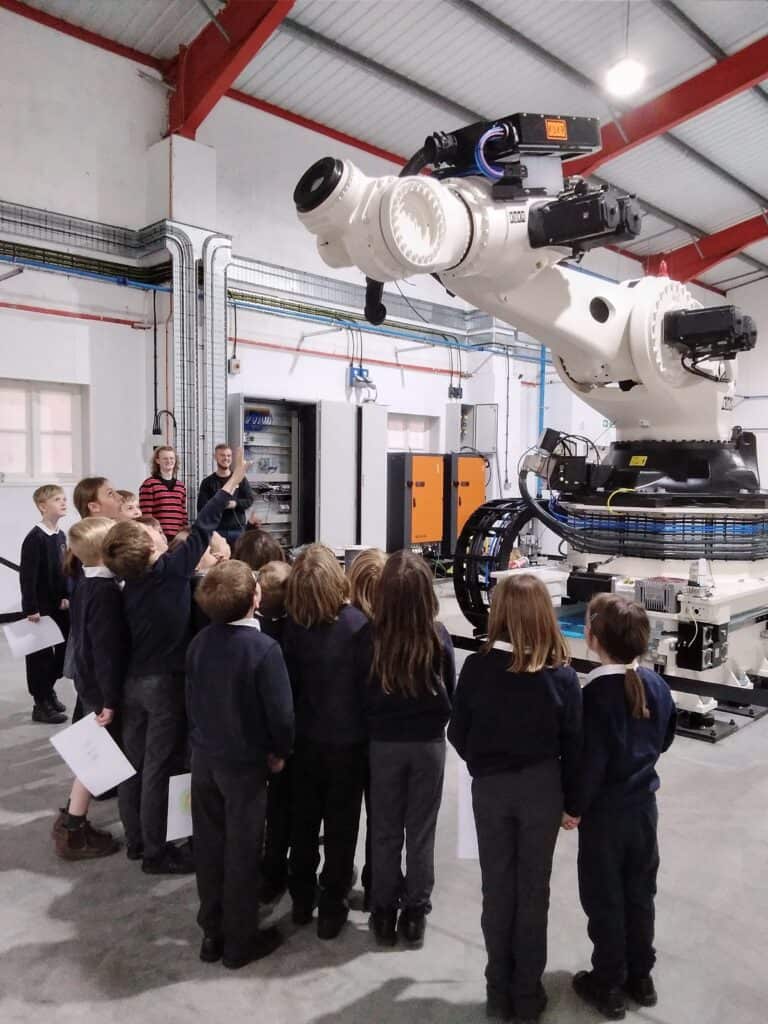
Cheselbourne Village School was excited to be the first school to visit the new KUKA Titans at Loop Technology Centre in Dorchester. The children were buzzing with excitement as the robots were switched on to show everything that they do. The school provided some creative artwork to be displayed at the centre and received a guided tour to help inspire the next generation of engineers.
Just before half term, children at Wardour Primary enjoyed an action-packed week of sport.
It began with a team of power-chair football experts teaching the children a variation of the sport they all love. Using adapted electric chairs, they learned how to control a large football and had a go at playing a 5-a-side game. The coaches came from Nova Sport, which organise a variety of sports for people with physical disabilities to play on a regular basis.

As part of the school’s Platinum Jubilee celebrations, there was a sponsored walk that involved dressing up in red, white and blue and walking around an obstacle-laden course as many times as possible, raising money for school resources. Later that afternoon, the whole school enjoyed a traditional tea party, wearing home-made crowns, eating sandwiches and cake.
This year’s guest speaker was Olympian Aerial skier Lloyd Wallace. He showed them how his training involved jumping onto a trampoline and into a swimming pool – with skis on! As well as sharing with them his passion and dedication for the sport, he also showed them a very damaged helmet from a not-so-successful landing on the slopes. Lloyd encouraged them to embrace and do their very best at whatever they loved doing, whether a sport or academic subject.
The week ended with Sports Day. Parents picnicked on the field, while the children prepared to run a variety of sprints and novelty races. The points were added up to declare this year’s winning house – Old Sarum.
The BV Podcast is the ‘best bits’ from each BV magazine. A warm and chatty monthly catch up, read by Jenny Devitt and Terry Bennett – perfect for when you’re baking, driving or walking.
BV June ’22, Part 3 – just hit ‘play’ above!
In the third and final of June’s episodes: